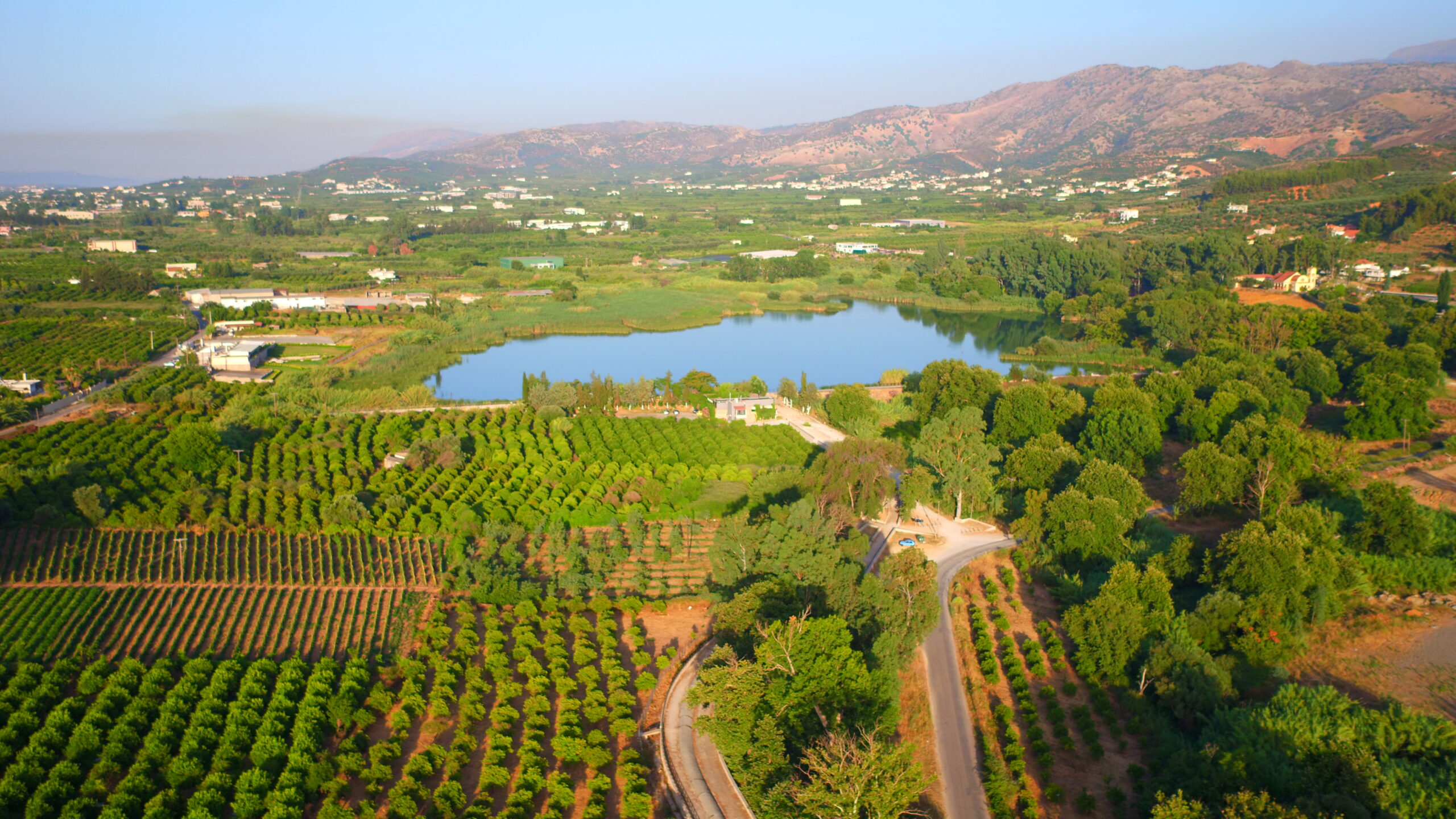Nature
Just 9 km west of the city of Chania, in the area of Agia, lies an oasis of tranquility and natural beauty that is part of the NATURA 2000 ecological network.
The artificial lake of Agia is a small paradise covering 450 stremmas (45 hectares), near the Fasa Valley. The area is considered one of the wettest in Crete! Before the construction of the Small Hydroelectric Power Plant (SHPP) Agia and the pipeline, the lake was a swamp formed by the natural flow of a tributary of the Keritis River.
Today, the SHPP, the park, the walking path around the lake, and the area's flora and fauna offer every visitor a refreshing and rejuvenating break in nature.
